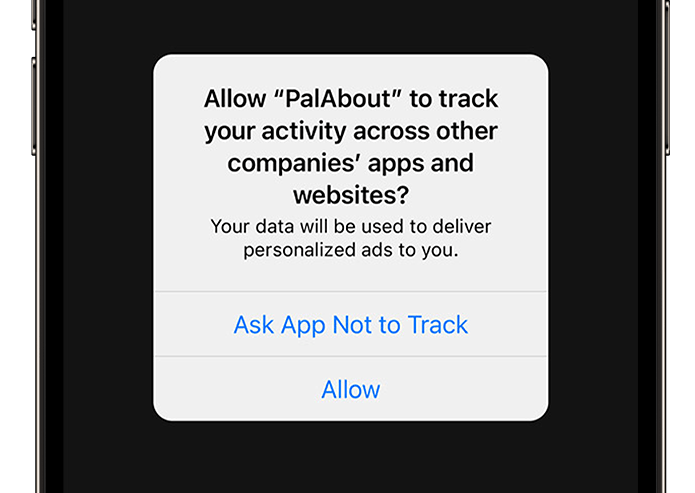Understanding Apple’s App Tracking Transparency, part 2: The Cookie Consent

As originally posted by LiveRamp in their ‘RampedUp’ blog series.
If you missed part one of our two-part series on Apple’s App Tracking Transparency (ATT) framework, read it here.
Since 2002, the adtech industry has gone through a number of regulatory and self-regulatory changes with the use of cookies, beginning with the EU’s e-Privacy Directive, W3C “do-not-track” browser proposals, and DAA “Adchoices.” It wasn’t until the EU’s GDPR came into effect in 2018 that companies took cookie consent seriously. Following dramatic fines by EU regulators of Twitter, Google, Amazon, and others, websites and apps have increasingly relied on consent management platforms (CMPs) to manage their cookie consent preferences. With the rollout of the IAB Europe’s Transparency & Consent Framework v2.0 (TCF) that requires specific consent choices, as well as the IAB U.S. CCPA Limited Service Provider Framework to process “Do Not Sell My Personal Information” requests from CA residents, these CMPs have upped their game to enable granular customization for each client.
While these approaches have taken on a level of control that most website visitors may never utilize, there are some important lessons app developers can take away from this evolution and use for Apple’s ATT consent:
- Offer choices with categories, not cookies. One of the shortcomings with the DAA Adchoices program is that it forces consumers to choose to opt out of the specific company utilizing browser cookies on that device, or as is often the case, the website links to the entire DAA participant list opt-out. Most consumers (and even adtech pros) find it difficult to tell the difference between the types of companies utilizing cookies on any given website. Instead, CMPs have reached consensus on offering consumers the various categories each cookie is placed in, notably “analytics (or measurement), personalization, and advertising.” While the cookie-serving adtech companies can now be organized along these lines, most consumers will likely never choose to select any of the individual cookies in these categories.
- Explaining the “why.” Email marketers, publishers, advertisers, and their respective adtech companies have improved education efforts around the various types of cookies, and not just in their legalese-driven privacy or cookie policies. There is a clear value exchange between the end user and the company utilizing cookies that can be better explained, notably how analytics, personalization, or advertising benefits a visitor. In that vein, here are some questions to ask of yourself to further improve visitors’ experience on your properties:
- Does your website simply retarget visitors with whatever they browsed for, or do you ensure the visitor gets the most relevant offers or discounts based on their prior purchases or behaviors?
- Will website personalization efforts make it easier for them to find the most relevant items?
- Does your app provide content or an experience that’s seen as valuable enough to keep it free and viable?
- Navigating the dashboard. In addition to the broad categories, CMPs have embraced customized choices that websites or apps can present to their users that vary widely by type of activity and region. Europeans who comply with the IAB’s Transparency & Consent Framework (TCF) are now presented with up to 12 different cookie purpose choices (with two special features), including whether to enable “legitimate interest” activities that may be independent from the specific choices. While the volume of these disparate choices may be overkill for most users, the cookie privacy preferences dashboard is still in its infancy, and we’ve been witnessing significantly positive responses to accepting cookies (upwards of 90%) for the websites and apps that present a user-friendly preferences option.
CMP lessons for Apple’s ATT
After more than 20 years of email marketing preferences and 10 years of cookie consent preferences, we can offer some key lessons for apps in improving their ATT user experience:
- Use an “explainer” prompt, in-app content, or even a dedicated email message to educate why this new ATT consent is important and how it helps the end user before they get the consent prompt
- Explain in plain language what the consent is for, what’s in it for them, and that they can change their mind at any time
- Consider linking to the App Store Privacy Nutrition Label or other dedicated privacy content that offers additional clarity on whether the shared information will be used under strict confidentiality with service providers, or may be used by third parties for their own independent uses
- Present the ATT information alongside existing preference dashboards with a deep link into the iOS settings
- Engage cross-platform tools or educational resources such as the Digital Advertising Alliance or perhaps in the future, the Partnership for Responsible Addressable Media
Consent is a continuum. By striving to optimize the user experience, publishers and marketers can retain and continually improve their ATT consent rates and even look to grow a more robust addressable advertising ecosystem.
